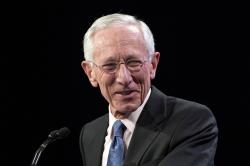

Research
BPEA | 1985 No. 1

1985, No. 1
IN 1971, Robert Mundell proposed a stunning solution to the three problems then affecting the U.S. economy: high inflation, high unemployment, and a weak currency. His essay The Dollar and the Policy Mix: 1971, from which I borrow my own title, called for a policy of fiscal expansion and monetary contraction. Mundell argued that applying this policy mix, which has recently been derided as driving with one foot on the gas and one on the brakes, would extract the comparative advantage of the two instruments. In Mundell’s view, formalized in his famous “assignment problem” for policy instruments, fiscal policy has a larger effect on output than on prices, while monetary policy affects prices more than output. Therefore, fiscal policy should be “assigned” to the output target and monetary policy to the price level target. Ostensibly, the policy mix of fiscal expansion and monetary contraction can work to raise output and cut prices, or at least slow inflation, at the same time. And both sides of the mix, asserted Mundell, would act to strengthen the currency, by raising interest rates and drawing in foreign capital. In 1971, it should be remembered, the dollar was tied to other currencies through fixed exchange rates and was under strong downward pressure, which forced a devaluation in mid-year.